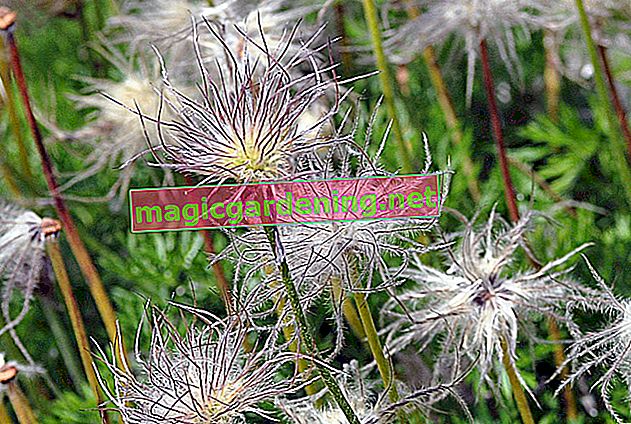
What is less well known, however, is the healing power of thyme, especially real thyme. This was already recommended by the learned abbess Hildegard von Bingen as a remedy against diseases of the respiratory tract and against certain women's ailments. Due to its abortive effect (already known to ancient and medieval midwives), thyme should only be used in small doses by pregnant women, but not at all as a medicinal herb.
also read
- Thyme - a culinary and medicinal herb that is rich in species
- Pimpinelle - used as a culinary and medicinal herb
- Pour thyme - but with a sense of proportion
Thyme in the kitchen
The Mediterranean herb has a characteristic, very spicy taste. Thyme is slightly hot and also a little bitter. Some varieties can also have a sweeter taste. Both the intensity of the aroma and the aroma itself depend on the type of thyme used and the growing area. Lemon thyme, for example, has a strong lemony note. In general, mountain thyme is more aromatic than thyme from the lowlands, in particular the wild thyme known as quendel is quite lovely.
What does thyme go with?
Thyme is used fresh or dried, especially in stews and oven dishes. Dried thyme has a much greater flavor than fresh plant components. You can use both the leaves and the flowers. Thyme goes well with:
- Meat (stews)
- fish
- Summer vegetables such as B. eggplant, zucchini, tomatoes, peppers
- Potatoes (baked potatoes, potato gratin or potato pancakes)
- Stews (bean, lentil, pea stews)
Add thyme to the desired dish at the start of the cooking time so that its aroma can fully develop.
Medicinal use of thyme
The aromatic herb was voted Medicinal Plant of the Year in 2006 - and with good reason, because the thymol it contains, a component of the essential oil, has both an antibiotic and disinfectant effect. Thyme is basically a natural antibiotic which, due to its phlegm-dissolving properties, is mainly used in diseases of the respiratory tract. Furthermore, thyme is also used for complaints in the gastrointestinal tract, because the abundant tannins and bitter substances it contains activate bile and liver and alleviate digestive problems. It is therefore highly recommended that you always add thyme to hard-to-digest dishes with meat and / or cabbage.
Thyme tea for colds and coughs
If you have a persistent, dry cough, prepare yourself a thyme tea and drink about three to five cups of it daily. If possible, sweeten with honey, as this natural product also has a slightly antibacterial effect.
- Chop 1 teaspoon of dried thyme or about 8 to 10 sprigs of fresh thyme (per cup!)
- Alternatively, you can use a mixture of thyme and sage (ratio approx. 3: 1)
- Pour the stripped thyme into a tea strainer
- and scald with 250 milliliters of boiling water
- Let the tea steep for about eight to ten minutes.
Tips & Tricks
Fresh thyme is best processed after you have harvested it at lunchtime - this is when it has its highest content of essential oils and other active ingredients.








